Religion influenced nearly every aspect of the ancient Egyptians’ lives. As it was very important to them, they were bound by tradition and unwilling to change. The history of ancient Egyptian religion is rooted in Egypt’s prehistory and it lasted for 3,000 years. With the exception of the Amarna Period (when King Akhenaten practiced monotheism), the ancient Egyptians believed in polytheism, or many gods.
Different gods rose and declined in popularity and importance over the millennia. There were 700 gods and goddesses and many were combined to create new deities. There was a hierarchy of gods, and Amun Ra (the Sun God) and Isis often juggled the supreme position.
The only instance of a drastic change was when King Akhenaten started his monotheistic religion. His Aten-centered cult lasted only about a decade and died with the pharaoh. Historians today, however, credit Akhenaten with being the first to practice monotheism.
Mythology
Gods were characters in myths the ancient Egyptians believed in that described and explained the universe as they knew it. These myths were strongly influenced by nature, especially patterns that they documented such as the path of the sun, the moon and the flooding and retreat of the Nile River.
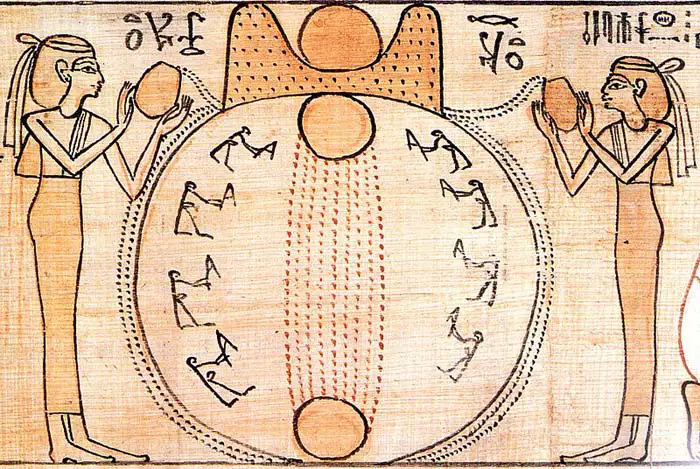
Sunrise in the Creation Myth
Mythology influenced ancient Egyptian culture including religious rites, rituals and festivals. We know about these rites and rituals from symbols and scenes depicted on tombs and temple walls, in literature and even the jewelry that they wore.
The ancient Egyptians used mythology as a basis for everything they did, and as a means for securing a heavenly place in the afterlife.
Ancient Egypt Creation Myths
The lives of the ancient Egyptians centered on the Nile River. It gave them water to drink, water to bathe and swim in, fish to eat, water for crops, crocodiles to both worship and fear, and a trade route for exchanging goods. It could be serene and peaceful and it could be wicked and heartless when it flooded. It also became popular in many of their creation myths.
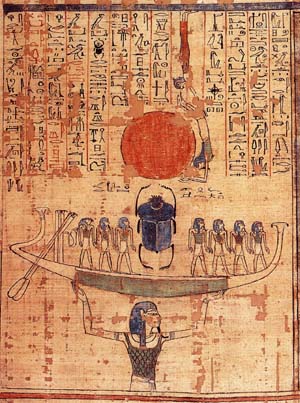
Nun lifting the solar barque
The main creation myth explained that before the beginning of time, Atum rose from out of the dark, roiling chaos called Nun (likely the Nile River). He created himself solely by the force of his will and his own thoughts. Once he rose, he created a hill because there wasn’t anywhere to stand.
Standing alone in the world, Atum was neither male nor female. Atum did have an all-seeing eyethat had the ability to roam the universe. Atum joined with his shadow to produce a daughter and a son. He named his son Shu, and he became the God of Air. He named his daughter Tefnut, and she became Goddess of Mist and Moisture.
The son and daughter were assigned the task to separate the roiling chaos into stability, law and order. They separated the chaos into light and dark. The order was called Maat and it formed the principles of life. Maat was a light and pure feather. Shu and Tefnut produced Nut, the sky, and Geb, the earth.
When they came into being, Geb and Nut were tangled together. Shu pushed Nut up into the sky where she looked over her mate, Geb. Even though they wanted to be together, Maat forced them to fulfill their earthly functions and be apart. Nut made rain for Geb and with it, Geb helped make things grow on the earth like flowers and trees. Nut gave birth to the sun every day at dawn where it would die at sunset at the end of the day.
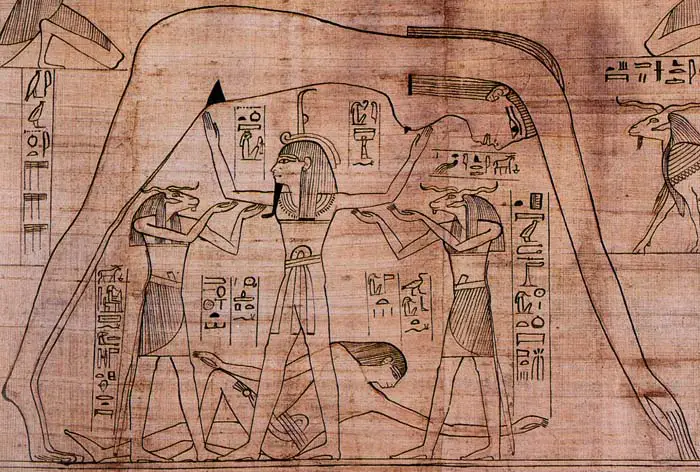
Depiction of the Creation Myth
Shu and Tefnut produced other deities. They produced Isis, Queen of the Gods, Hathor, the Goddess of Love and Beauty, Osiris, the God of Wisdom and Justice and Seth, God of Evil. They produced Thoth, the God of Wisdom and Nephthys, Protector of the Dead.
Still, Maat was not fully realized and chaos was everywhere. Shu and Tefnut were lost inside Nu. Atum wanted to find his children so he sent out his all seeing eye. After some time, Shu and Tefnut returned with their father’s eye. Atum was so happy to see his children that he wept tears of joy. When the tears hit the earth, they became the very first men.
The men who now populated the earth were bound to uphold the balance of Maat. It was man’s job to tend to the earth and worship the gods. In return, the gods protected and loved the men.
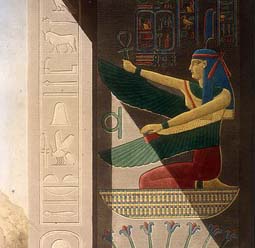
The Importance of the Afterlife
Ancient Egyptians loved life, but their life expectancy reached only 40 years old at best. They wanted their lives to continue beyond death, and strongly believed in preservation of the body and providing the deceased with all of the essentials they would need in the afterlife. To them, death was merely a brief disruption in life, and if the funeral practices were followed correctly, the deceased could live without pain in the Fields of Yalu.
However, a lot went into securing a person’s right into the Fields of Yalu.
THE PERSON’S HEART HAD TO BE LIGHT.
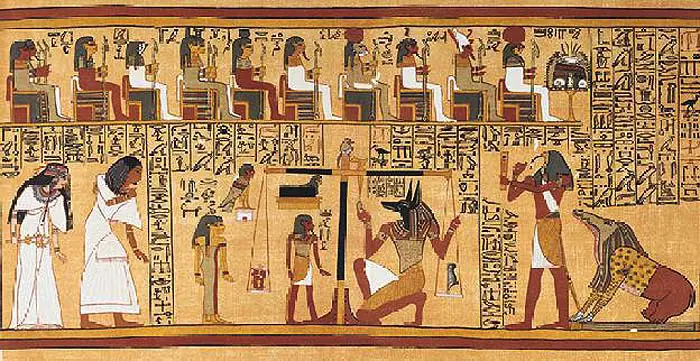 Depiction of the Weighing of the Heart
Depiction of the Weighing of the Heart
The more good deeds a person participated in, the lighter their heart became. Ultimately, upon the person’s death, Anubis weighed their heart against a feather from Ma’at’s (Goddess of Truth and Justice) headdress. If the heart was heavy with bad deeds, it would be devoured by Ammut (soul eater), and the person would not live on in the afterlife. This belief ensured that the ancient Egyptians worked hard at making their souls light.
The ancient Egyptians believed there were two important aspects to everyone, the “ka” and the “ba.” The ka was the person’s life force, while the ba was their soul. Without the process of embalming, the ancient Egyptians believed a person couldn’t pass into the afterlife successfully.
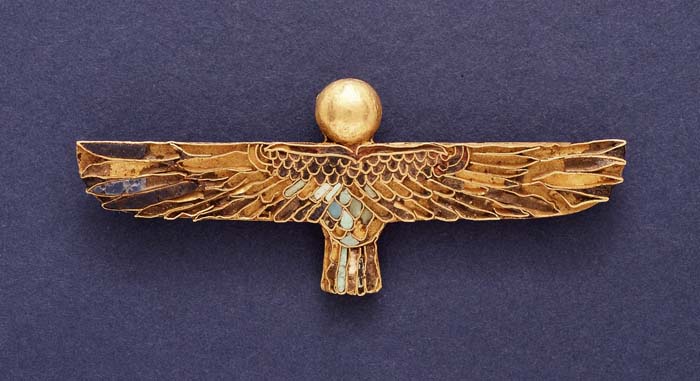 Ba Amulet
Ba Amulet











































